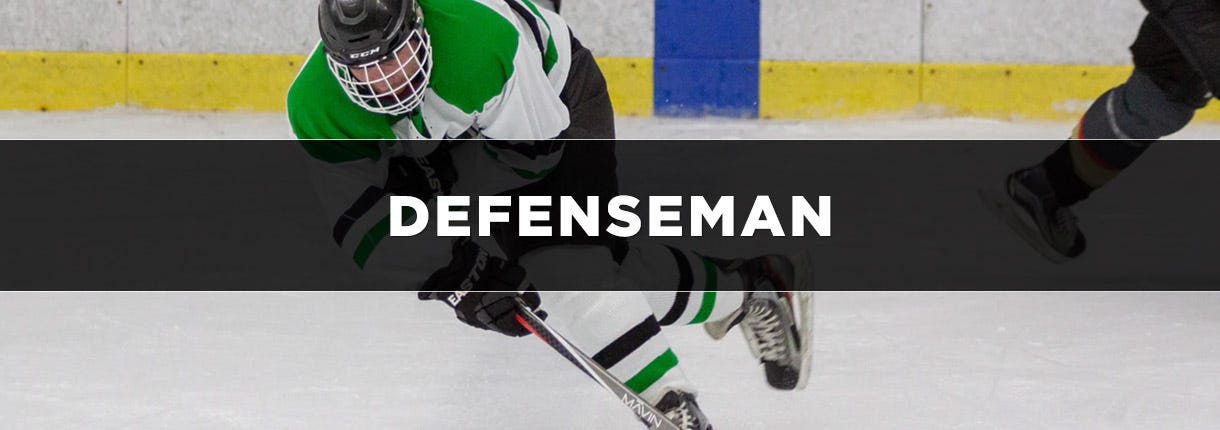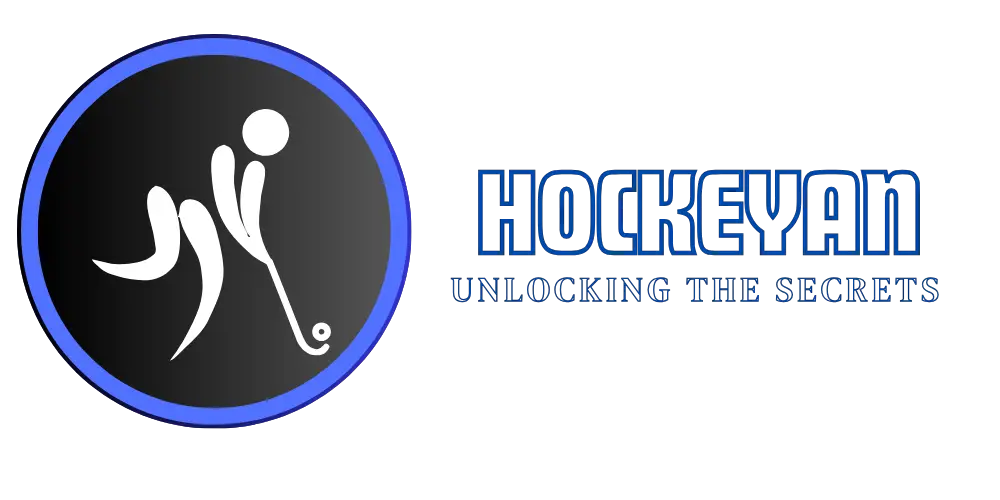Playing defenseman in hockey requires skill, strategy, and sharp instincts. Defensemen are vital for protecting the goal and supporting offensive plays.
Understanding the role of a defenseman is crucial for effective gameplay. Defensemen must balance defensive duties with offensive contributions. They need to read the game, anticipate opponents’ moves, and make quick decisions under pressure. Strong skating, positioning, and stickhandling are key skills.
Effective communication with teammates is also essential. This guide will help you grasp the fundamentals of playing defenseman in hockey. Whether you’re new to the position or looking to improve, these insights will enhance your performance on the ice. Let’s dive into what it takes to excel as a hockey defenseman.

Credit: howtohockey.com
Defensive Positioning
Playing as a defenseman in hockey requires strong defensive positioning. Good positioning helps stop offensive plays and supports your team. This involves stick placement and body positioning. Mastering these elements can make a huge difference.
Stick Placement
Proper stick placement is crucial for a defenseman. Always keep your stick on the ice. This limits passing lanes and blocks shots. Keep the blade of your stick facing the puck. This makes it easier to intercept passes.
Use your stick to guide opponents towards the boards. This reduces their scoring chances. Maintain a gap of one to two stick lengths from the opponent. This helps you react quickly to their moves.
Body Positioning
Effective body positioning is vital in hockey defense. Always keep your body between the puck and the net. This makes it harder for opponents to score. Bend your knees and stay low to improve balance and speed.
Face the play at all times. This allows you to see both the puck and your opponent. Position yourself at an angle. This helps guide the attacker towards the boards or into a less dangerous area.
Communicate with your teammates. Clear communication helps organize the defense and cover gaps. Use short, clear phrases to relay important information quickly.
| Aspect | Tip |
|---|---|
| Stick Placement | Keep stick on ice, face blade to puck |
| Body Positioning | Bend knees, stay low, face play |

Credit: www.hockeymonkey.com
Gap Control
Playing as a defenseman in hockey requires skill and strategy. One crucial aspect is gap control. This technique helps you manage the space between you and the attacking player. Proper gap control can prevent the opponent from advancing easily. It also helps you maintain a strong defensive position.
Maintaining Distance
Maintaining the right distance is essential. A good defenseman knows when to stay back and when to move forward. Too close, and the attacker may slip past you. Too far, and they can gain momentum. The ideal distance varies depending on the situation.
- Neutral Zone: Stay closer to the blue line.
- Defensive Zone: Keep a tighter gap, especially near the net.
In the neutral zone, staying closer to the blue line helps you prepare for quick transitions. In the defensive zone, a tighter gap is crucial. It prevents attackers from getting good scoring chances.
Closing The Gap
Closing the gap means reducing the space between you and the opponent. This action can force the attacker to make a decision. They might pass, shoot, or try to deke. Timing is critical when closing the gap.
- Watch the opponent’s speed and direction.
- Use quick strides to close the distance.
- Maintain balance and be ready to pivot.
Always watch the opponent’s speed and direction. Use quick strides to close the gap effectively. Maintain balance to be ready for any sudden moves. A well-timed approach can disrupt the attacker’s play.
Gap control is a vital skill for any defenseman. By maintaining the right distance and closing the gap at the right moment, you can effectively disrupt the opponent’s play and protect your team’s goal.
Effective Checking
Effective checking is a critical skill for any defenseman in hockey. It helps to disrupt the opponent’s play and regain possession of the puck. Below, we will explore different types of checks and how to execute them effectively.
Types Of Checks
There are several types of checks that a defenseman can use:
- Body Check: Using your body to stop an opponent.
- Stick Check: Using your stick to poke the puck away.
- Hip Check: Using your hip to knock an opponent off balance.
Timing And Execution
Timing is crucial for effective checking. Here are some tips to help with timing and execution:
- Anticipate the Play: Watch the puck and predict your opponent’s next move.
- Stay Low: Keep your body low to maintain balance and power.
- Engage Quickly: Move towards the opponent swiftly to reduce their options.
Practice these techniques regularly to improve your checking skills. Remember, effective checking is about timing, positioning, and precision.
Shot Blocking
Shot blocking is a crucial skill for any defenseman in hockey. It requires bravery, quick thinking, and precise techniques. Effective shot blocking can be the difference between a win and a loss. Understanding the techniques and anticipating the opponent’s shots are essential.
Techniques For Blocking
To block shots effectively, you need to know the right techniques. Here are some key methods:
- Square Up: Always face the shooter directly. This maximizes the area you cover.
- Kneel Down: Drop one knee to the ice. This helps block low shots.
- Stick Position: Keep your stick on the ice. It can deflect pucks away.
- Use Your Body: Position your body to cover the most space.
- Timing: Time your movements to match the shooter’s release.
Anticipating Shots
Anticipating the opponent’s shots is crucial for effective blocking. Here are some tips:
- Read the Play: Watch the puck and the shooter’s body language.
- Positioning: Stay between the shooter and your goalie. This reduces scoring chances.
- Watch the Stick: The shooter’s stick can indicate the shot’s direction.
- Communicate: Talk with teammates. This helps in positioning and coverage.
- Practice: Work on anticipation drills. They improve your reaction time.
By mastering these techniques and developing the ability to anticipate shots, a defenseman can significantly contribute to the team’s defensive strength. Practice regularly, stay focused, and always be ready to block the next shot.
Puck Retrieval
Playing as a defenseman in hockey requires various skills, but one of the most crucial is puck retrieval. This skill can change the outcome of the game. Retrieving the puck efficiently helps your team regain control and set up offensive plays. Let’s dive into key aspects of puck retrieval to help you become a reliable defenseman.
Winning Battles
Winning battles for the puck is essential. It starts with positioning. Always stay between the opponent and the puck. Use your body to shield the puck. Anticipate where the puck will go. Be quick and decisive in your movements.
Use your stick effectively. Keep it on the ice and in the passing lanes. The goal is to disrupt the opponent’s play and regain control. Strong stick handling will give you an edge in tight spaces. Remember, physicality is part of the game, but play smart. Avoid unnecessary penalties.
Quick Transitions
Once you retrieve the puck, transition quickly. Look for an open teammate to pass the puck to. Quick transitions can catch the opposing team off-guard. This can lead to scoring opportunities for your team.
Communication is key. Talk to your teammates and let them know your intentions. This ensures everyone is on the same page. Good communication reduces the risk of turnovers.
Keep your head up. Always be aware of your surroundings. This helps you make better decisions with the puck. A well-timed pass can change the course of the game.

Credit: www.youtube.com
Frequently Asked Questions
What Is The Role Of A Defenseman In Hockey?
A defenseman protects their team’s goal. They stop opposing players and clear the puck from their zone.
How Can A Defenseman Improve Their Skating Skills?
Practice skating drills daily. Focus on agility, speed, and balance. Good skating is key for defensemen.
What Positioning Should Defensemen Maintain?
Stay between the opposing player and your goal. Keep your stick ready and eyes on the puck.
How Do Defensemen Contribute Offensively?
They support forwards by passing the puck and taking shots from the blue line.
What Are Key Defensive Tactics In Hockey?
Stick checking, body positioning, and blocking shots are essential. Always stay alert and ready.
How Important Is Communication For Defensemen?
Very important. Communicate with your goalie and fellow defensemen to coordinate effectively and cover gaps.
How Can Defensemen Effectively Block Shots?
Get in the shooting lane. Stay low, use your stick and body to block the puck.
What Should Defensemen Do During A Power Play?
Stay patient. Focus on keeping the puck in the offensive zone and look for shooting opportunities.
How Do Defensemen Handle Breakaways?
Stay calm and position yourself between the puck carrier and the goal. Use your stick to disrupt the play.
Conclusion
Playing defenseman in hockey takes practice and dedication. Focus on positioning and awareness. Communicate with teammates for better coordination. Always keep an eye on the puck. Stay between the puck and the net. Improve your skating skills for quick movements.
Remember to block shots and passes. Developing these skills will make you a stronger defenseman. Practice regularly and stay committed. Your effort will pay off on the ice. Enjoy the game and keep learning.




